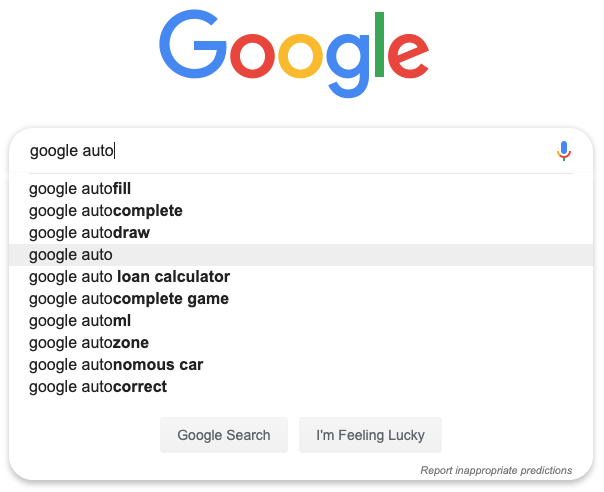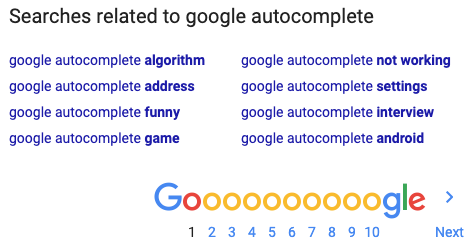How to Create Effective Content for the Awareness Stage of the Buyer’s Journey
- Content Marketing
- Marketing Strategy

Research shows 91% of B2B marketers use content marketing to reach customers, and 86% of B2C marketers say content is key to their overall marketing strategy. But less than 50% of marketers are creating content that aligns with the buyer’s journey.
So, why is this the case? It starts with the confusion surrounding the buyer’s journey. How many stages are there? Is it a funnel, an infinite loop, or something else entirely? And perhaps most importantly, how is it relevant to you as a content marketer?
I understand that the buyer’s journey can be complicated. To make it more digestible, I’m breaking it down into a series of four blogs: one for each stage of the buyer’s journey. I want to make this topic as easy to understand as possible. In turn, you’ll be able to take what you learn and apply it to your own marketing strategy.
Before getting too far into awareness-stage content marketing, I’ll lay the necessary groundwork. Let’s start by discussing the buyer’s journey, buyer personas, and the crucial role content marketing plays in the awareness stage of the buyer’s journey.
What is the Buyer’s Journey?
The customer buying journey is the steps a prospect goes through on their way to purchasing a product or service. While there are several models of the buyer’s journey, I’ve broken it down into four main stages.
Awareness Stage
This is the first step in a buyer’s journey. At this point, the prospect becomes aware they have a problem or something missing from their lives. After coming to this realization, they start doing research to pinpoint their problem.
Consideration Stage
In this stage, the prospect has defined their problem and is ready to find a solution. They’re continuing to do research because they want to understand all of their options.
Decision Stage
The prospect has chosen how to solve their problem and created a list of companies that can help them. They’ll eventually narrow this list down and make their purchasing decision.
Post-Decision Stage
The buyer’s journey doesn’t end after the decision stage. At this point, customers are reflecting on their decision and evaluating their choice. If they’re pleased with your product or service, you have the opportunity to bring them back through the buyer cycle again.
What are Buyer Personas?
Buyer personas are an integral part of the buyer’s journey stages. Buyer personas aren’t actual people, but they’re based on the real market research you’ve collected about current customers. It’s important to be as detailed as possible when building your personas, since they play a big role in attracting qualified leads and winning new business.
Buyer Personas and the Buyer’s Journey
You might be wondering just how buyer personas relate to the buyer’s journey. Start by creating buyer personas for each stage of the buyer’s journey I outlined above. When creating your personas, determine what prospects are looking for and how they go about solving their problems. What questions should you be asking about them? Prospects are learning about you, and you should always be learning about them.
Understanding your audience also helps you demonstrate empathy because they’re more likely to trust you and consider your products or services. Think about Google and the trust they’ve built with their users. By providing free services (i.e. Google Drive, Gmail, Google Flights, Google My Business, etc.), they’ve established their value in the minds of consumers. They’ve also kept themselves top-of-mind and clearly aren’t going anywhere any time soon.
You now understand the buyer’s journey and the role buyer personas play in guiding customers through that process. But how does content marketing fit into the customer acquisition process and the buyer’s journey?
What Role Does Content Marketing Play in the Buyer’s Journey?
Content marketing plays a key role during all stages of the buyer’s journey, but don’t take a one-size-fits-all approach when creating your content. Instead, produce and share buyer’s journey content that provides the most value for prospects in that specific stage.
As I said above, in the awareness stage, prospects realize they have a problem and are trying to pinpoint it. If you want them to seriously consider you, it’s crucial that you provide upper-level educational content to help them.
Never go for the hard sell with your top of funnel content marketing. Prospects don’t want to hear about why you think your company is the best thing ever. They want impartial, expert knowledge and advice on the problem they’re trying to identify (and eventually solve).
Another way to think about this is by reflecting on your logic when it comes to choosing a digital marketing agency. You probably aren’t ready to partner with us at this point, and your prospects probably aren’t ready to sign on with you either.
Ultimately, you want to subtly nurture awareness stage prospects towards conversion. Providing them with comprehensive, useful content builds trust and increases the chances they’ll move towards a purchase decision involving your company.
How Do You Create Content for the Awareness Stage of the Buyer’s Journey?
We’ve reviewed the buyer’s journey, buyer personas, and how content maps onto the buyer’s journey. You already know the awareness stage of the buyer’s journey is the point where prospects realize they have a problem or something missing from their lives. Their next step is doing research and looking for top-level educational content and thought leadership.
Most of your prospects use Google to gather information and do research. That means it’s important to understand what their search queries look like. The prospect doesn’t know a lot about their problem at this point, so their questions are usually more open-ended. For example, they’ll probably search for “new shoes,” not “Sperry women’s striped loafers size 8.”
So, you know people are asking broad questions. To capture that traffic, anticipate their queries and address them in your content. Don’t get too detailed, though. Instead, provide quick takeaways that aren’t buried in long walls of text. Think like your user. They want to develop their understanding of their problem so they can move towards pinpointing it and preparing to find potential solutions.
Google Autocomplete

One way to think like your prospects is by utilizing Google Autocomplete. As users type questions into the search bar, Google Autocomplete suggests queries it thinks are relevant.
Google Related Searches

Google Related Searches also gives you insight into what users are thinking. Related searches show up at the bottom of every search engine results page (SERP) and have queries Google thinks are similar to the users.
What Content is Most Effective During the Awareness Stage of the Buyer’s Journey?
Awareness stage content marketing can come in a variety of forms. Here are some examples:
- White papers provide detailed informational content on complicated topics or problems. This makes them perfect for the awareness stage. Here are twenty examples of well-written, effective white papers.
- eBooks are electronic versions of printed books that can be read on personal technology devices. They’re a great way to disseminate helpful information during the awareness stage. Here’s some more information about eBook reading, creation, and distribution.
- How-to videos are another excellent way of providing educational content without pushing your brand too much. Here are some examples of and tips for creating effective how-to videos.
- Blog posts are the perfect place to share top-level educational content that helps prospects learn about the problem they’re experiencing. Check out this blog post for examples of top marketing blogs and what they do well.
- Infographics use a variety of visual images (illustrations, charts, diagrams, etc.) to convey information and data. When done right, they’re eye-catching and provide helpful, impartial takeaways for prospects in the awareness stage. This blog has a list of 40 infographics that effectively explain complex topics.
Always remember that providing engaging, useful content during the awareness stage of the buyer’s journey helps nurture prospects towards the consideration stage.
What Are Some Examples of Awareness Stage Marketing Campaigns?
Along with particular pieces that work well during the awareness stage, there are several awareness stage campaign types that can yield great results. Here are just a few:
- Awareness campaigns are the perfect opportunity to provide prospects with valuable content that shows empathy for their situation. Demonstrate expertise and authority without being salesy, and you’ll start to gain their trust. End with a soft closing CTA and link to a piece of educational content so users can learn more if they want to.
- Grand opening campaigns are great for prospects who haven’t heard of your business yet. If you’re opening a new location (and most of your customers are local), consider a grand opening campaign.
Invite prospects in for a free seminar, educational course, or webinar about your company that provides helpful information without being pushy. - Birthday and new mover marketing campaigns are perfect for businesses who know their prospects’ birthdays or have access to data on new movers. Try targeting these people with free offers and discounts on the informational events we mentioned above. Again, don’t be pushy or try to advertise your brand too heavily in this stage.
Want help with your content marketing efforts? Our team of digital marketing specialists is here to help!
 Grace H
Grace H  April
April